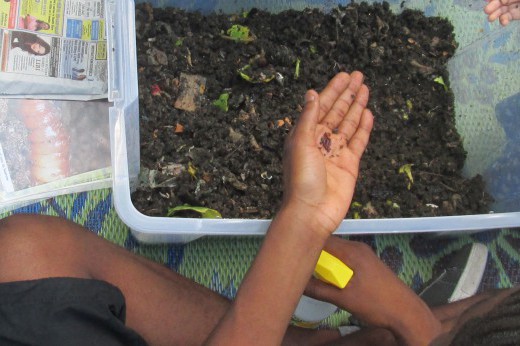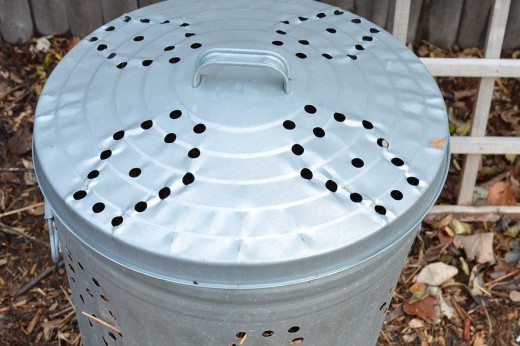Left on its own, all organic matter will eventually break down into nutrients that can be absorbed by plants. Composting is simply a way of helping things along by including the right ingredients in the right proportions under optimal conditions. Follow these guidelines to produce compost faster and without odor or pest problems.
What can I compost?
Most plant-based organic material, including yard waste and fruit and vegetable scraps, can be composted at home under the right conditions.
You can put these materials in your backyard bin or pile:
- leaves and brush
- plant cuttings
- grass clippings
- fruit scraps
- breads and grains
- coffee grounds and filters
- tea bags
- eggshells
- wood chips
- sawdust
- wood ash
- old potting soil
- cut flowers
- food-soiled paper (napkins, paper towels)
Don't add these materials to your compost:
- meat scraps
- fish scraps
- dairy products
- fats or oils
- grease
- dog feces
- kitty litter
- weed seeds
- charcoal ash
- nonorganic materials
Layering and Mixing
Aim to have roughly equal parts “green” (nitrogen-rich) and "brown" (carbon-rich) materials. All organic materials contain carbon and nitrogen in varying proportions. In general, wet, or green, materials such as grass clippings, food scraps, and plant cuttings contain a higher proportion of nitrogen than dry, or brown, materials such as wood, paper, and autumn leaves.
Greens (high nitrogen):
- grass clippings
- plant cuttings
- fruit and vegetable scraps
- coffee grounds
Browns (high carbon):
- fallen leaves
- twigs
- wood chips
- sawdust
- used napkins and paper towels
- soil or finished compost
To create ideal conditions for composting, try to include roughly equal parts of both and layer or mix the materials in your pile. A pile with more browns will still turn into compost, but it will take longer. If you add too many greens, your pile may generate odors.
To avoid odors or pests, bury food scraps under browns such as leaves, brush, wood chips, or finished compost.
Air and Water
The microorganisms in compost need oxygen and water to survive.
To make sure that air can penetrate to the center of your pile, it should not be larger than 5 feet high by 5 feet wide. You can also layer your pile with coarse materials to help air circulation; or you can aerate it by turning or mixing it periodically. Turning requires extra effort, but will accelerate the compost process.
Your pile should be about as moist as a wrung-out sponge, not soggy. You may want to water it periodically during a dry spell or after adding large amounts of dry materials.
Time
You can make compost in as little as three months, or the process could take as long as one year. Each of the following measures will speed the composting process:
- Layer your pile with the proper proportion of greens and browns.
- Turn your pile and keep it moist but not soggy.
- Chop materials such as branches and grapefruit rinds into small pieces before adding them to your pile.
Using Compost
If you have ever used peat moss, wood chips, manure, or topsoil to amend your garden, then you already know how to use compost. Mix compost into flower and vegetable beds; blend it with potting soil to revitalize indoor plants; or spread it on your lawn as a fertilizer. Use coarser compost as a mulch around trees and shrubs.
Note: If you make compost with plant cuttings or grass clippings that have been sprayed with pesticides, avoid using it on edible crops.



